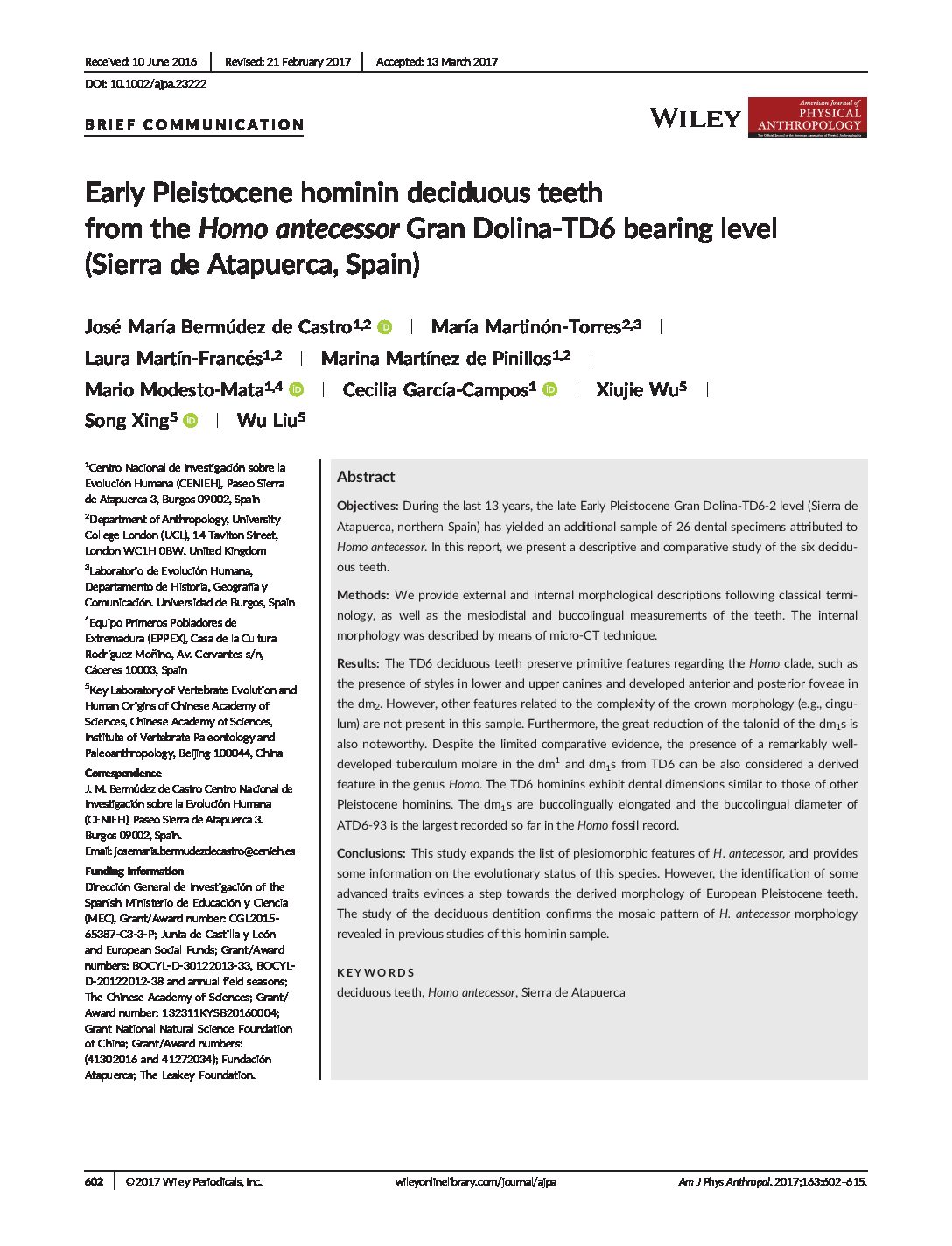Overview
Abstract
Objectives. During the last 13 years, the late Early Pleistocene Gran Dolina-TD6-2 level (Sierra de Atapuerca, northern Spain) has yielded an additional sample of 26 dental specimens attributed to Homo antecessor. In this report, we present a descriptive and comparative study of the six deciduous teeth. Methods. We provide external and internal morphological descriptions following classical terminology, as well as the mesiodistal and buccolingual measurements of the teeth. The internal morphology was described by means of micro-CT technique. Results. The TD6 deciduous teeth preserve primitive features regarding the Homo clade, such as the presence of styles in lower and upper canines and developed anterior and posterior foveae in the dm2. However, other features related to the complexity of the crown morphology (e.g., cingulum) are not present in this sample. Furthermore, the great reduction of the talonid of the dm1s is also noteworthy. Despite the limited comparative evidence, the presence of a remarkably well-developed tuberculum molare in the dm1 and dm1s from TD6 can be also considered a derived feature in the genus Homo. The TD6 hominins exhibit dental dimensions similar to those of other Pleistocene hominins. The dm1s are buccolingually elongated and the buccolingual diameter of ATD6-93 is the largest recorded so far in the Homo fossil record. Conclusions. This study expands the list of plesiomorphic features of H. antecessor, and provides some information on the evolutionary status of this species. However, the identification of some advanced traits evinces a step towards the derived morphology of European Pleistocene teeth. The study of the deciduous dentition confirms the mosaic pattern of H. antecessor morphology revealed in previous studies of this hominin sample.


